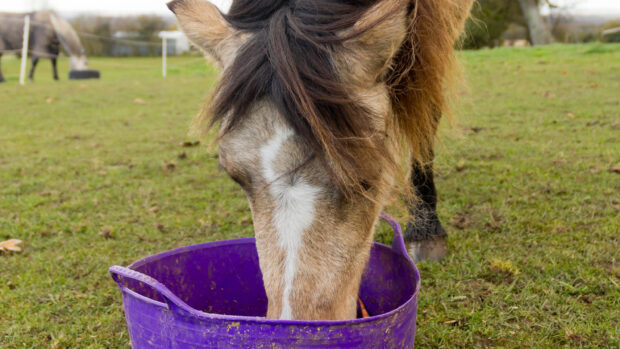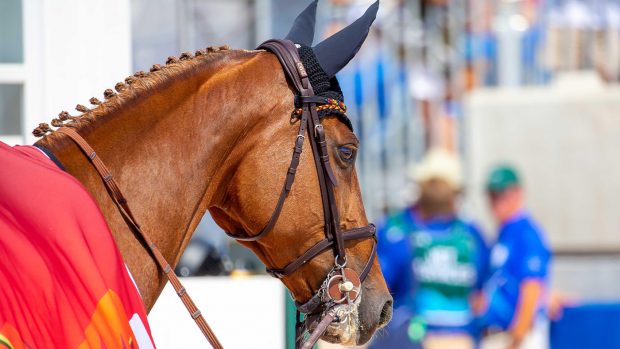Our TVs are flooded with images of probiotic drinks and bio-yoghurts, constantly encouraging us humans to look after our bacteria. Researchers have been talking about probiotics in the field of equine nutrition for many years, long before the human market experienced its recent growth surge.
Biotechnology company Alltech was founded to work on yeast cultures, probiotics and enzymes back in 1980, and the brand Yea-Sacc1026 was launched in 1981. The probiotics invasion has been gathering momentum ever since, and yeast cultures are now used in many commercial horse feeds and supplements.
Playing with nature?
Many people are now looking for a natural way to feed their horses in the wake of commercial confusion. But surely, in the horse’s natural state, his gut flora would naturally balance and adapt to his diet and surroundings?
“These days, even horses living at grass are surviving on a closely managed environment with agriculturally improved pastures, as opposed to roaming and eating a much larger variety of herbage,” says Alltech’s equine specialist Jon Townson. “It is no longer necessary to accept just adequate microbial balance in our horse’s intestines, when we can optimise it.”
In normal situations, both good and bad micro-organisms cohabit in the horse’s large intestine – just 1ml of the horse’s hindgut content may contain more than 100 billion bacteria.
However, many horses today are stabled for long periods, with the result that they do not have constant access to forage. In addition, they are subjected to changes in their environment, antibiotic veterinary treatments, the stress of travelling and the excitement of competition.
All of these ‘abnormal’ situations can have a detrimental effect on equine digestion and alter the balance of both good and bad bugs.
On a par with our own busy, stressful lives, we have to accept that lifestyle plays a big part in our horses’ health and performance. Accordingly, we must help their digestive systems as much as we possibly can.
Bacterial allies and enemies
In order to understand how yeast can play a part in our horse’s wellbeing, we need to understand the function of bacteria.
“In the acidic foregut, good bacteria are the first line of defence against disease-causing bugs,” explains Jon. “In the more neutral conditions of the hindgut, the beneficial bacteria have a digestive role, predominantly breaking down fibre. In addition, the bacteria are important for making some nutrients, such as B vitamins, and can help release key minerals from the diet,” he says.
On the other hand, bad bacteria must not be given a chance to gain too much of a hold, Jon adds. “They have always been present in the gut, but poor feeding practices probably give bad bacteria a better chance to thrive.
“There are a number of reasons why these undesirable bacteria grow in numbers, such as sudden changes to the diet, the effects of stress, or long periods without food. All of these can alter the gut environment in favour of bad bacteria.”
Biotechnology products can be used to improve gut health and function, even when we might consider that the horse is on a natural diet. It is still important, however, to use a management system that suits the horse’s natural trickle-feeding lifestyle, as well as to reduce stress on the digestive system, where possible, by feeding a high-fibre diet.
High fibre providers
Fibre is the current buzzword and all feed manufacturers and nutritionists advocate a diet that has a high fibre content. However, not so long ago many commercial yards were feeding a diet high in cereal and starch, which in these enlightened times does not seem conducive to good digestion.
A cereal diet increases the potential for undigested starch to reach the horse’s hindgut, where fermentation causes a rapid reduction in the pH level and subsequent undesirable high acidity.
“Traditionally, horses were often fed higher levels of cereal, largely oats, which can hinder digestion,” says Jon. “However, modern research has identified certain problems associated with high cereal diets – for example, stomach ulcers. These have now been linked to crib-biting and loss of condition in the performance horse.
“Fortunately, we now understand much more about the horse’s dietary requirements and, by providing a natural, high-fibre diet, can work with nature to reduce stress on the digestive system.”
Why yeast is best
Undigested carbohydrates and excess starch in the diet can cause undesirable high acidity in the hindgut, which can give rise to a wide range of effects, from reduced B vitamin formation in the hindgut to the onset of laminitis. This situation has also been linked to ER (exertional rhabdomyolysis, also known as ‘tying up’).
High acidity in the hindgut upsets the delicate bacterial balance, causing the beneficial bacteria to die off which, in turn, releases endotoxins (the toxic remains of dead bacteria) that pass through the gut wall and into the bloodstream. In some horses this can trigger changes to the circulation in the feet, while in others it affects metabolism.
Yeast cultures can help prevent such digestive upsets, explains Jon. “EU registration permits Yea-Sacc1026 to be used in a preventative manner, by helping to restore the beneficial microbial population where an influx of undigested cereal has altered hindgut acidity, for example. Trial data published in the Journal of Animal Science also shows that Yea-Sacc1026 helps ‘buffer’ against fluctuating hindgut acidity and assists in the restoration of normal gut function,” he says.
Microbials explained
Several types of microbial product are available within the equine feeding market – probiotics, prebiotics and yeast cultures, as well as a combination of any of these, which are known as synbiotics:
- Probiotics: Feed supplements containing live microbes, typically beneficial bacteria, that can improve intestinal balance and gut health. Probiotics are based on acid-producing bacteria that work predominantly in the foregut.
- Prebiotics: Non-digestible food ingredients that support the growth of good bacteria in order to improve intestinal balance and gut health.
- MOS (mannan-oligosaccharide) prebiotics: Complex molecules concentrated from yeast cell wall material. They bind to bad bacteria in the foregut and hindgut and prevent them colonising. This allows good bacteria to proliferate and has been shown to assist with immune system function.
- FOS (fructo-oligosaccharide) prebiotics: These deliver fructans (short-chain sugars) into the foregut where acidic conditions are required. This, in turn, stimulates the production of beneficial acid-producing bacteria, such as lactobacilli and bifidobacter.
- Yeast cultures: There are thousands of strains of yeast, each of which have different properties and effects. Yeast cultures that have been selected for use in equine diets have been shown categorically to stimulate good bacteria in the hindgut of the horse, thereby stabilising hindgut conditions and improving digestion.
- Synbiotics: These are nutritional supplements that contain a combination of probiotics, prebiotics and/or yeast cultures. The aim is to use their synergistic relationship to support both fore and hindgut function.
|




